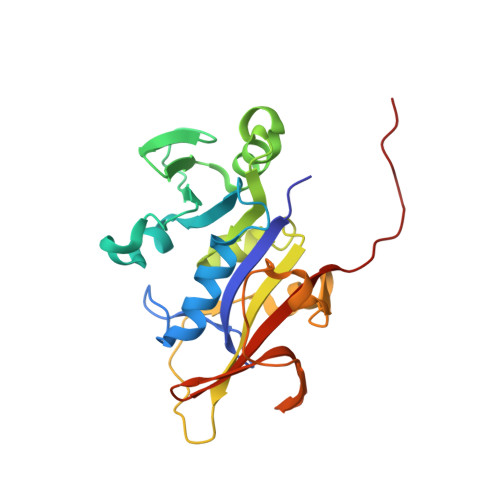Probing the active site of Candida glabrata dihydrofolate reductase with high resolution crystal structures and the synthesis of new inhibitors
Liu, J., Bolstad, D.B., Smith, A.E., Priestley, N.D., Wright, D.L., Anderson, A.C.(2009) Chem Biol Drug Des 73: 62-74
- PubMed: 19152636
- DOI: https://doi.org/10.1111/j.1747-0285.2008.00745.x
- Primary Citation of Related Structures:
3EEJ, 3EEK, 3EEL, 3EEM - PubMed Abstract:
Candida glabrata, a fungal strain resistant to many commonly administered antifungal agents, has become an emerging threat to human health. In previous work, we validated that the essential enzyme, dihydrofolate reductase, is a drug target in C. glabrata. Using a crystal structure of dihydrofolate reductase from C. glabrata bound to an initial lead compound, we designed a class of biphenyl antifolates that potently and selectively inhibit both the enzyme and the growth of the fungal culture. In this work, we explore the structure-activity relationships of this class of antifolates with four new high resolution crystal structures of enzyme:inhibitor complexes and the synthesis of four new inhibitors. The designed inhibitors are intended to probe key hydrophobic pockets visible in the crystal structure. The crystal structures and an evaluation of the new compounds reveal that methyl groups at the meta and para positions of the distal phenyl ring achieve the greatest number of interactions with the pathogenic enzyme and the greatest degree of selectivity over the human enzyme. Additionally, antifungal activity can be tuned with substitution patterns at the propargyl and para-phenyl positions.
- Department of Pharmaceutical Sciences, University of Connecticut, 69 N. Eagleville Rd, Storrs, CT 06269, USA.
Organizational Affiliation:


















